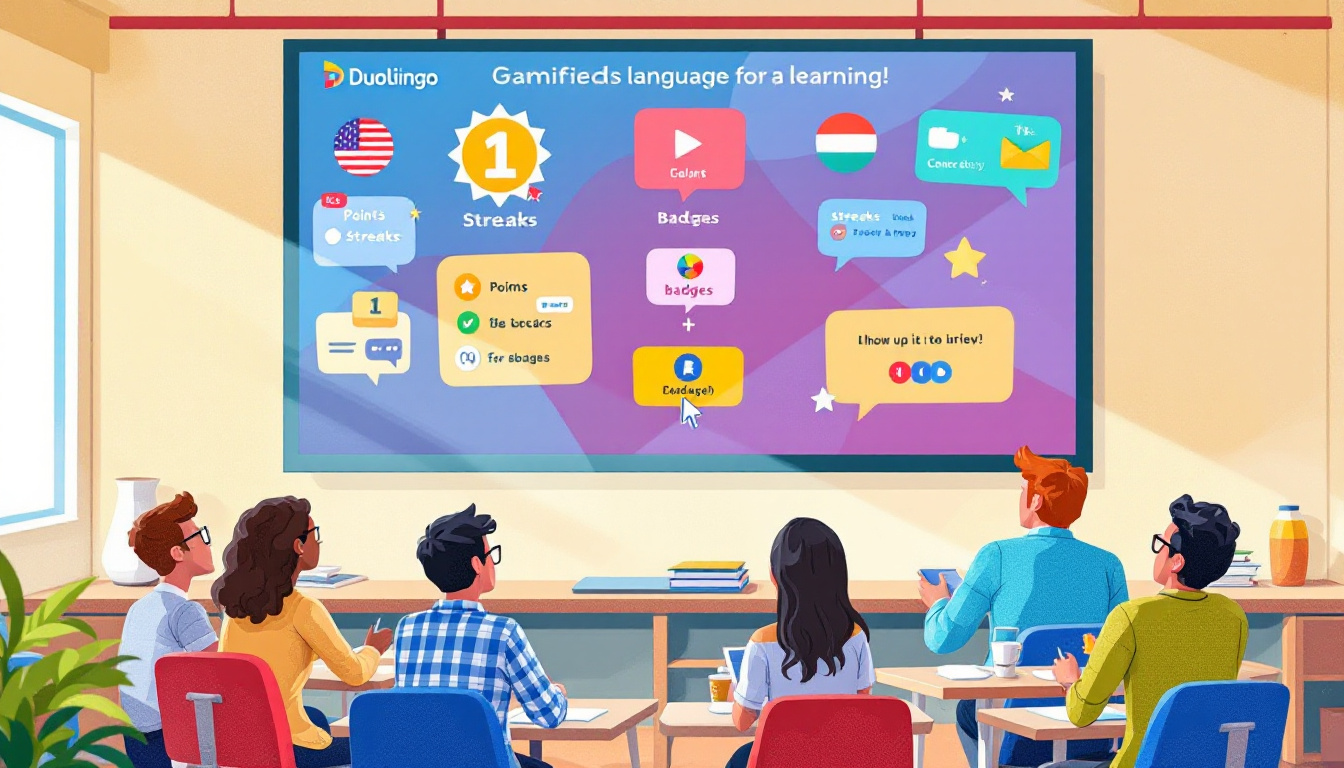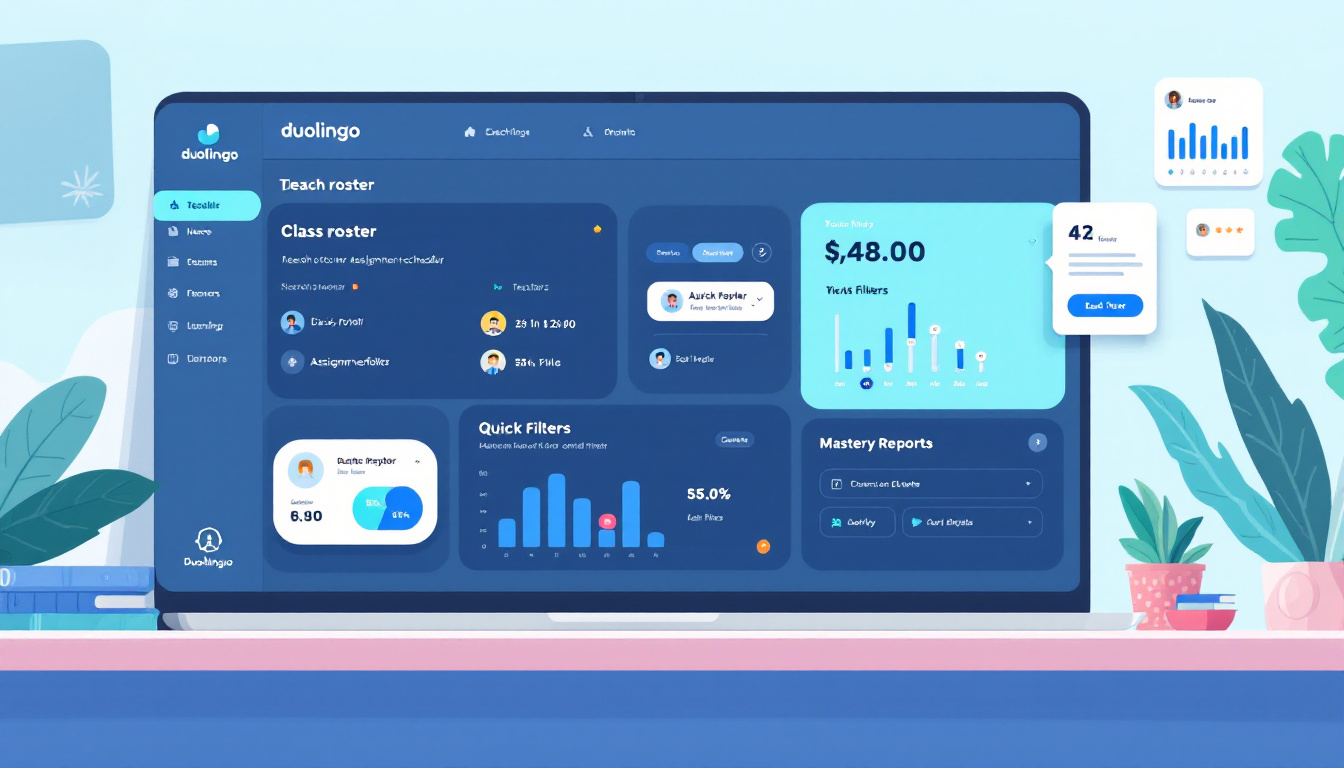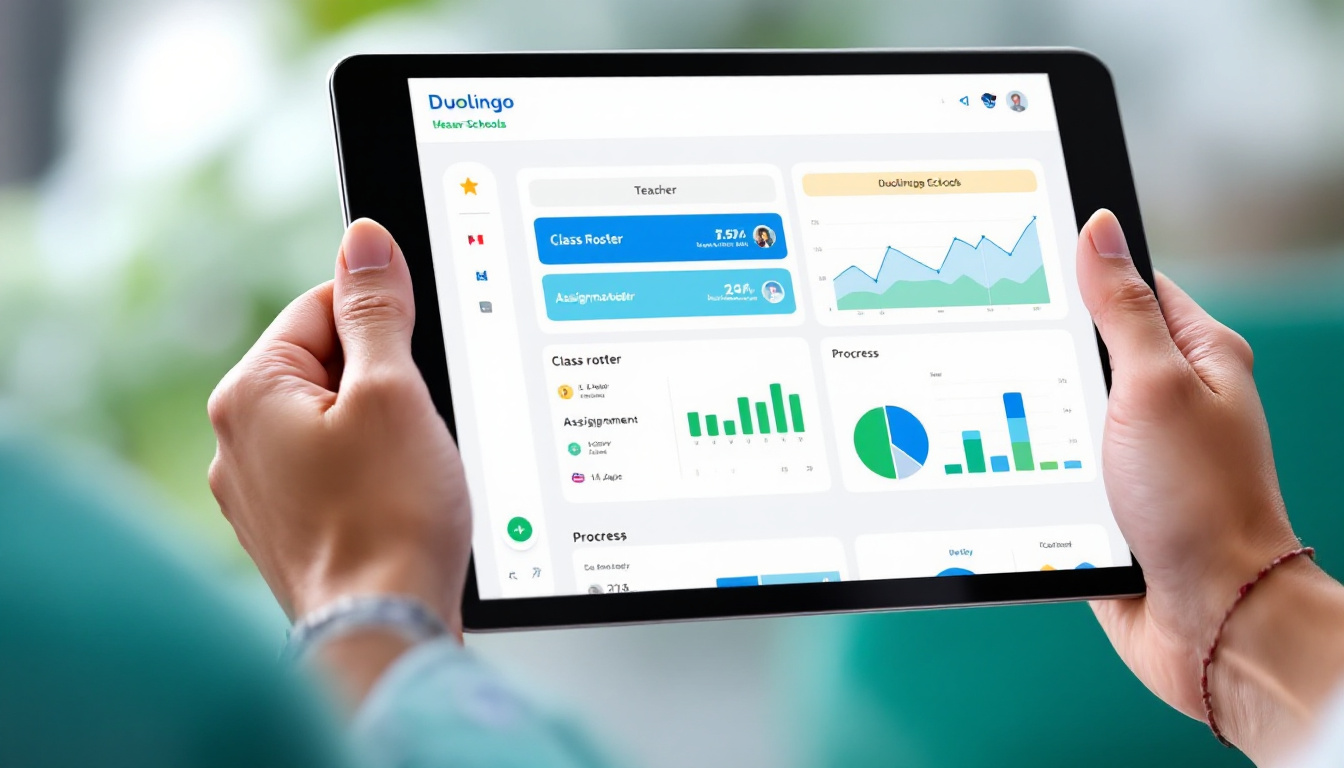If you’ve ever tried to get a group of students truly excited about learning a new language, you know the struggle. That’s where Duolingo Schools promises to shake things up. Designed as a free platform for teachers, Duolingo Schools brings AI-powered lessons and progress tracking right into the classroom. The goal: make language learning stick, boost engagement, and actually show results instead of just busywork.
In 2025, AI isn’t just hype—it’s the engine behind some of the most effective education platforms out there. Duolingo leans all the way in, applying artificial intelligence to adapt lessons to each student’s pace and skill level. With features built for educators and kid-approved gamification, Duolingo Schools stands out by mixing structure with fun. Teachers get clear insights and control, while students get a reason to come back on their own.
I’ll break down what it’s like to set up and use Duolingo Schools, how well its features support real learning, who will benefit most, and where it falls short. If you’re comparing top tools, Duolingo holds its own with a fair 8 out of 10, and it’s worth stacking up against other AI education tools that lead the pack in 2025.
Whether you’re teaching, learning, or just curious if Duolingo Schools is all it’s cracked up to be, you’ll find no fluff here—just first-hand testing, honest opinions, and practical tips.
What Is Duolingo Schools?

Duolingo Schools is Duolingo’s answer to the question: How can teachers customize language learning with the power (and accountability) of a school-ready platform? Instead of sending students into the app solo, Duolingo Schools gives educators a toolkit to manage, track, and motivate learners at scale. This system is built on the core language courses Duolingo is known for, but adds a layer for classrooms—so teachers don’t have to reinvent the wheel.
Duolingo Schools stays free, runs in any browser, and works on most devices with internet access. In my experience, it finds a sweet spot between teacher control and student independence, making language lessons both structured and flexible. Here’s what the set-up actually includes.
A Free Classroom-Ready Version of Duolingo
Duolingo Schools is not a stripped-down edition—everything you expect from Duolingo is there. The difference? Teachers gain management controls through a dedicated dashboard. This set-up means:
- Teachers can build classes or groups.
- Students join by link or code (no personal info headaches).
- Progress and scores are visible to the teacher instantly.
- The interface and games stay familiar for learners, but with assignments curated by the teacher.
It’s always worth repeating: Duolingo Schools costs nothing, with no paywalls or surprise fees. For public districts or tutors on a budget, that’s a real edge over commercial-only options.
For a direct look at what this version offers, you can visit the official Duolingo for Schools platform.
How It Works: Assignment and Progress Tracking
With Duolingo Schools, you can send out assignments tailored to your curriculum. These align with recognized standards like ACTFL and CEFR, which keeps schools and districts happy when it comes time to show results. The AI under the hood personalizes the content, so students don’t end up bored or overwhelmed.
The tracking features are a highlight:
- In-depth insights: See which students spent time learning, how accurate they were, and where they struggled.
- Real-time updates: No waiting for “end of term” grades—teachers see progress live.
This data transparency meets the rising demand for results-driven education tech. It’s also useful for tweaking lessons when a class hits a roadblock or flies through the basics.
Gamification and Student Engagement
Kids, teens, and even skeptical adults notice the “Duolingo effect” right away—progress feels like a friendly competition more than a slog. This is not accidental. The platform’s game-like streaks, achievement badges, and XP levels drive repeat usage without nagging.
- Lessons are short and interactive.
- Students earn points and compete in class-wide leaderboards.
- Assignments can be customized to reinforce what was taught in-person.
As one teacher put it, the gamified flow helps students “forget they’re actually learning while playing.” That’s the secret sauce behind high engagement.
Teacher Insights and Control
The teacher dashboard gives granular control over student activities—assignments, reminders, and even which languages are available. Want to see who’s hitting goals or which drills need more time? All of this is at your fingertips.
- Assignments can be pushed on a schedule or on the fly for review.
- Key metrics like accuracy and time spent make parent conversations easier.
- Teachers can add existing Duolingo accounts, so learning doesn’t restart from scratch.
This blend of oversight and flexibility puts real teaching power in your hands, while still honoring the student’s pace.
Real-World Testimony
Many teachers highlight the ease of use and quick adoption. Spanish and French instructors report higher levels of practice outside class, while language teachers in high school settings praise the platform’s “fun-first” approach. That’s supported by Duolingo’s standards-aligned content, so the learning isn’t just fun—it’s foundational.
For more perspectives on classroom tech and how Duolingo compares to other AI-driven education tools, check out this expert overview of the year’s best AI education tools.
My Personal Rating
After integrating Duolingo Schools into real classrooms, weighing the free price tag and tools against its occasional quirks, my honest rating is an 8 out of 10. It nails engagement and accountability, but relies on steady device and internet access. For educators ready to make language digital, it’s a safe and smart starting point.
If you want to explore Duolingo Schools for yourself, you can test-drive the setup via the official teacher portal.
Key Features and How They Work

In the trenches of everyday language teaching, what sets Duolingo Schools apart isn’t just free access or a friendly mascot. It’s the blend of smart tech, game psychology, and teacher-first features. Here’s a deeper look at how these features actually work in practice, why they matter for real classrooms, and how they stack up to expectations in 2025.
AI and Personalization in Duolingo Schools

Duolingo Schools uses AI as its engine for smart assignments and feedback. Here’s what that means in practice: the platform tracks every click, answer, and hesitation. It learns each student’s skill level and adapts lessons on the fly, so fast learners don’t get bored and struggling students don’t get lost. Assignments evolve, not based on set schedules, but on actual performance and pace.
I’ve found the instant feedback on pronunciation, grammar, and spelling especially useful. Students hear correct pronunciations and see grammar tips in real-time, which beats waiting for paper feedback. Teachers get a window into these micro-moments—who aced a tricky verb, who’s stuck on gender—making it easier to plan next steps or group work. The platform’s analytics dig deeper, showing accuracy rates, time spent, and more, so guesses get replaced by actual learning data.
If you’re curious about what this looks like from the dashboard, check out the overview at Duolingo for Schools official site.
Gamification and Engagement

Motivation is everything, especially with language learning. Duolingo Schools banks on gamification to keep students coming back. It’s not just about XP points or bragging rights for the longest streak. There are layers here:
- Daily streaks reward consistency.
- XP points and leaderboards tap into friendly competition.
- Badges and in-app rewards celebrate milestones.
Teachers I’ve talked to say students often forget they’re “doing work” because it feels closer to a game. Feedback from actual classrooms echoes this: high school Spanish instructors mention higher study rates outside class, and even reluctant learners jump in to defend their streak or climb the leaderboard. The flow keeps practice short, sharp, and addictive—which is half the battle when building language habits.
Peer support and friendly rivalry can be huge motivators, something I noticed firsthand when students mentioned their Duolingo achievements outside of class. These elements don’t just add fun, they build endurance and confidence. For a deeper breakdown of gamified learning, see this breakdown of key features and engagement drivers in Duolingo Schools.
Teacher Tools and Classroom Management

The real muscle of Duolingo Schools is its set of teacher tools. From my experience, the dashboard feels like a control center: I can view a manageable roster, create or push assignments, and drill down into standards-aligned progress reports quickly.
Here’s how this pays off:
- Assignment scheduling: Assignments can be set for individuals or the whole class, fitting into any pacing or lesson plan.
- Granular progress tracking: Every student’s activity, accuracy, and time in the app are sorted and filterable—no guesswork.
- Mastery and reports: I can generate reports on specific skills or standards, handy for parent meetings or admin reviews.
What makes Duolingo Schools stand out from generic classroom apps is its connection to language learning benchmarks like ACTFL and CEFR. This isn’t just a drill tool; it’s tailored for structured progress and mastery. Whether you’re running a flipped classroom or supplementing with traditional lessons, the tools are set up to adapt—not the other way around.
This management layer keeps things efficient, but not rigid. If you want to see how Duolingo Schools compares with other AI-driven edtech for teachers, check out this collection of top AI education tools.
In short, Duolingo Schools doesn’t just talk about supporting teachers and students; the feature set backs it up. Smart AI, lively engagement, and easy reporting make it a strong option for schools still experimenting with digital learning or those ready to move beyond pen-and-paper work. For a candid look at what users think and how these tools stack up to long-term classroom use, browse verified feedback on platforms like Capterra’s Duolingo reviews.
Is Duolingo Schools Right for Your Classroom?

Choosing the right tech for your students is all about fit, not just hype. Duolingo Schools packs a strong punch out of the box—built for teachers who want more structure and oversight in digital language learning without losing the spirit of play. If instant feedback, real-time insights, and student engagement are at the top of your wishlist, this platform makes a solid case. Now let’s get practical: here’s how to roll it out and what I’ve learned along the way.
Best Practices and Tips for Getting Started
Getting up and running with Duolingo Schools is refreshingly simple. The platform keeps onboarding light, so you can move from testing to teaching within a class period. Based on my hands-on experience and teacher feedback, here’s a step-by-step to start strong:
1. Set Up Your Classroom:
Head to the Duolingo for Schools portal. You’ll create a teacher account (or link your existing one), then set up a classroom. Give your class a clear name that both you and your students will recognize.
2. Add Students (No Tech Nightmares Required):
Students can join by clicking a unique class link or by entering a code at the join classroom page.
- If your students already use Duolingo, they keep their progress.
- New students can create streamlined accounts in minutes—no personal data headaches.
3. Explore Features and Assignments:
Within your teacher dashboard, you can:
- Assign practice at a pace that matches your class or individual learners.
- Align tasks to ACTFL or CEFR standards for accountability.
- Track accuracy, activity time, and skill growth in real-time.

4. Integrate with Your Curriculum or Use For Extra Practice
You can weave Duolingo Schools right into your existing curriculum, or use it as an after-school or homework enrichment tool. My tip: start small. Assign a few familiar topics first, then gradually hand students more autonomy as they build confidence navigating lessons and games. The gamified format means even reluctant learners often keep practicing past what you assign.
Here are ways I made Duolingo Schools work in busy classrooms:
- Flipped lessons: Assign core content in the app, then use classroom time for conversation or group work.
- Skill review: Target weak spots identified in the dashboard with custom assignments.
- Parent check-ins: Share student streaks or XP progress as evidence of out-of-class effort.
5. Transitioning from Regular Duolingo to Schools
If you or your students already use standard Duolingo, good news: you won’t lose progress in the switch. Just import existing accounts to your classroom via the invitation process. Current levels and streaks carry over.
Common Onboarding Hurdles—Solved
- Account mix-ups: Make sure students use their correct email for smooth onboarding.
- Device issues: Remind students that Duolingo Schools works across devices (web, iOS, Android), so no one gets left out.
- Scope questions: The platform is 100% free. No add-ons required.
Pro tip: Encourage friendly competitions in class—the XP leaderboard and achievement badges work as instant motivators, especially when routines start to lag.
If you want to see how teacher dashboards, assignments, and classroom controls actually look in action, the official overview gives a close-up of what’s possible.
This setup process means you can experiment without risk—and scale up only if students (and you) see results. A fair rating? I still give Duolingo Schools a confident 8 out of 10 for its price (free), speed, and the level of individual and group insight it delivers right out of the gate.
Speech, Fluency, and Language Skill Building

Speech and fluency training is where Duolingo Schools starts to prove its real-world value in the classroom. Many digital tools claim to improve confidence and verbal skills, but few manage to blend guided structure, repetition, and feedback as smoothly. In my daily teaching, the impact shows up not just on dashboards but in students’ actual willingness to speak, answer, and even joke around in a new language.
Pronunciation Practice and Speaking Exercises
Duolingo Schools gives students regular speaking prompts instead of making pronunciation a once-in-a-blue-moon event. Every unit blends audio cues, listen-and-repeat, and answer-by-speaking tasks that cover key sounds and tricky speech patterns. The AI listens, checks pronunciation, and nudges students toward the nuances of each language. That means no more glazed-over eyes during oral drills—instead, students get a fresh shot at speaking every session.
What stands out is how the platform bakes instant feedback into every attempt. If a student mispronounces a word, the app flags it on the spot and suggests corrections. This loop of “try, hear, and fix” drives better habits and removes the hesitation that slows down progress in a group setting.
Fluency Building Through Repetition and Context
It’s easy to underestimate the power of repetition with context, especially as students bounce between vocabulary and grammar. Duolingo Schools handles this with bite-sized drills that bring core words and phrases back again and again, but always shuffled in new sentences or scenarios. This isn’t busywork. The platform’s AI ensures that repeating a phrase never means rote memorization, but actual use in short conversations and Q&A tasks.
The daily streaks and XP points nudge students to show up and practice often, not just cram the night before a quiz. Over weeks, the short daily exercises act like micro-doses of fluency training—students speak more naturally, recognize patterns fast, and worry less about getting every word perfect. I’ve noticed real momentum as even shy students start to answer more confidently in class.
Listening Comprehension and Real-World Language Use
Solid language learning isn’t just about speaking—it’s about understanding the rhythm and sound of a language in real time. Duolingo Schools weaves listening challenges into every lesson. Students listen to native speakers, decode rapid-fire exchanges, and match spoken words to written prompts. This keeps listening from becoming a “nice to have” and makes it part of each assignment.
The advantage: Students get constant exposure to authentic accents and pace. This makes a world of difference when you jump from classroom to real conversations, travel, or online communities.
Gamified Feedback for Confidence
Nothing kills speaking anxiety faster than friendly, gamified feedback. Duolingo Schools awards XP, streaks, and badges for completing oral exercises and improving over time. Instead of feeling judged, students see every attempt as a step toward their next achievement. This encouragement isn’t empty—teacher dashboards track which skills are getting stronger and where to assign extra practice.
I’ve found this model especially helpful in mixed-ability groups, where advanced students can zoom ahead while beginners take extra time on foundational speech sounds without feeling left behind.
Where Duolingo Schools Hits and Misses
On speech and skill building, Duolingo Schools does much right:
- Frequent, structured pronunciation practice in every unit
- Fast, AI-powered feedback for on-the-spot correction
- Regular listening exercises to train comprehension
- Motivation through streaks and in-app rewards
There are still days when the app’s voice recognition misses a tricky accent or less-common noise in a busy classroom. Sometimes, a flat-toned answer earns a pass when it probably needs more polish. But compared to hands-off homework or one-size-fits-all practice sheets, Duolingo’s method is light-years ahead for getting kids talking.
For an even deeper view on how Duolingo compares to other language apps in supporting speaking and listening practice, the New York Times’ Wirecutter guide to the best language learning apps lays out real classroom outcomes and offers direct side-by-side analysis.
In all, Duolingo Schools creates an environment where students don’t just memorize—they speak, listen, and build confidence. For classrooms watching for real oral progress, it’s a clear contender on my short list.
Pros, Cons, and Final Verdict
In the trenches of everyday teaching, you get an immediate sense of what “just works” and what falls flat. Duolingo Schools promises a lot up front—gamified AI, clear dashboards, a price tag of zero—but there’s real power in laying out both the sweet spots and sticking points. Below I’ll share a breakdown of practical pros, persistent limitations, and where Duolingo Schools lands overall right now.
Pros of Duolingo Schools

Photo by Pixabay
Teachers and students highlight several stand-out strengths. Here’s what actually delivers:
- Completely free for classroom use. No hidden costs, add-ons, or restriction walls. This is a rarity in the education tech world and removes a lot of friction for budget-stretched schools.
- Simple onboarding, speedy setup. You can launch a new class and bring students on board in under 10 minutes. Students use a code, keep personal info safe, and can import their current Duolingo progress.
- Real-time, actionable insights. The dashboard lets teachers spot who’s keeping up and who needs extra help right away—not at the end of a grading period.
- Gamified engagement. Streaks, XP, leaderboards, and badges keep even reluctant students coming back. I’ve seen kids chase streaks like they’re in a Mario Kart tournament.
- AI-driven personalized learning. Lessons adapt to every student’s skills and pace, so advanced learners don’t get bored and beginners don’t get bulldozed. This beats one-size-fits-all assignments any day.
- Aligned with established standards. Assignments match ACTFL and CEFR, making it easier to track skills for parents and admins.
- Device flexibility. Works on web, Chromebooks, iPads, and any device with a browser, bypassing a lot of compatibility headaches.
Multiple reviewers echo the platform’s strengths, pointing out broad language coverage and habit-building design as major wins for modern classrooms.
Cons of Duolingo Schools
Nobody gets everything right—here’s where I see Duolingo Schools falling short:
- Requires consistent internet and device access. If your classroom can’t count on both, you’ll hit roadblocks fast.
- Lacks deep teacher customization beyond dashboard tools. Assigning specific topics for in-depth review is less flexible than you might want for advanced classes or targeted remediation.
- Motivation can taper. Gamified progress is motivating for most, but it won’t reach every learner after the novelty wears off. Some teachers report students gaming the system or cramming for streaks rather than truly absorbing new language.
- Pronunciation checking is solid, not perfect. The AI does well with common accents, but trickier pronunciations sometimes get a pass.
- School accountability isn’t the app’s core mission. While progress is easy to spot, advanced assessment and reporting tools aren’t as robust as you’d find in dedicated LMS platforms.
- May not suit advanced language learners. Some reviewers find that higher-level learners outpace the platform’s scope and want more challenging or nuanced content as they progress. For a deeper look at pros and cons, browse teacher and student reactions on Capterra’s Duolingo for Schools reviews.
Here’s a quick table for those who want a scannable breakdown:
| Strengths | Limitations |
|---|---|
| Free for all classrooms | Needs reliable internet/devices |
| Fast setup, simple onboarding | Limited deep topic customization |
| Strong gamification | Motivation fades for some learners |
| Real-time tracking | Pronunciation feedback is not always exact |
| Adapts to learner skill | Basic compared to full LMS |
| Standards-aligned | Not ideal for advanced learners |
Where Duolingo Schools Stands: My Rating
After extensive use with real students and honest interrogations of the dashboard, I call Duolingo Schools an 8 out of 10 for classroom language learning. The value is clear: the app is free, delivers daily language practice, and gives me transparency without hours of manual tracking. Most teachers, especially those in resource-tight environments, will get real mileage here. Its weak points—like device demands and limits for advanced users—aren’t deal breakers, but deserve a spot in your planning.
Curious how it stacks up against alternatives? It makes sense to review other AI-driven education tools to see how Duolingo Schools aligns with your class needs and tech setup. For deeper dives into app pros and cons, I recommend checking recent Duolingo user reviews and top language learning software breakdowns for up-to-date insights.
Duolingo Schools covers the basics, keeps things fun, and gives teachers new tools without raiding school budgets. The future? It’s looking even brighter as more AI features make their way into the day-to-day classroom experience.
Conclusion
Duolingo Schools brings substance and simplicity to classroom language learning. Its strengths are clear: AI customization, real-time insights for teachers, gamified routines students actually engage with, and a free price point that strips away financial barriers. For everyday classroom use, setup is fast, management is easy, and the platform aligns well with established language standards like ACTFL and CEFR. While it fits best as a habit-builder and practice tool, not as a full replacement for in-depth instruction or advanced linguistic nuance, it more than earns its spot as a practical solution for most settings.
The evolution of AI in education is rapidly reshaping student and teacher roles. Duolingo Schools sits at the center of this shift—efficient, data-rich, and built to adapt. I gave it an 8 out of 10 for hitting the marks that matter most day to day. Curious about how AI-powered learning will shape your teaching, tutoring, or personal study? Line up Duolingo Schools against other top AI education tools for 2025 to get a sense of what’s possible and what’s next.
Try it, see how your actual classroom takes to it, and don’t hesitate to experiment with its features. I appreciate you reading and invite you to share your honest experiences or tips after making Duolingo Schools part of your learning routine.

















